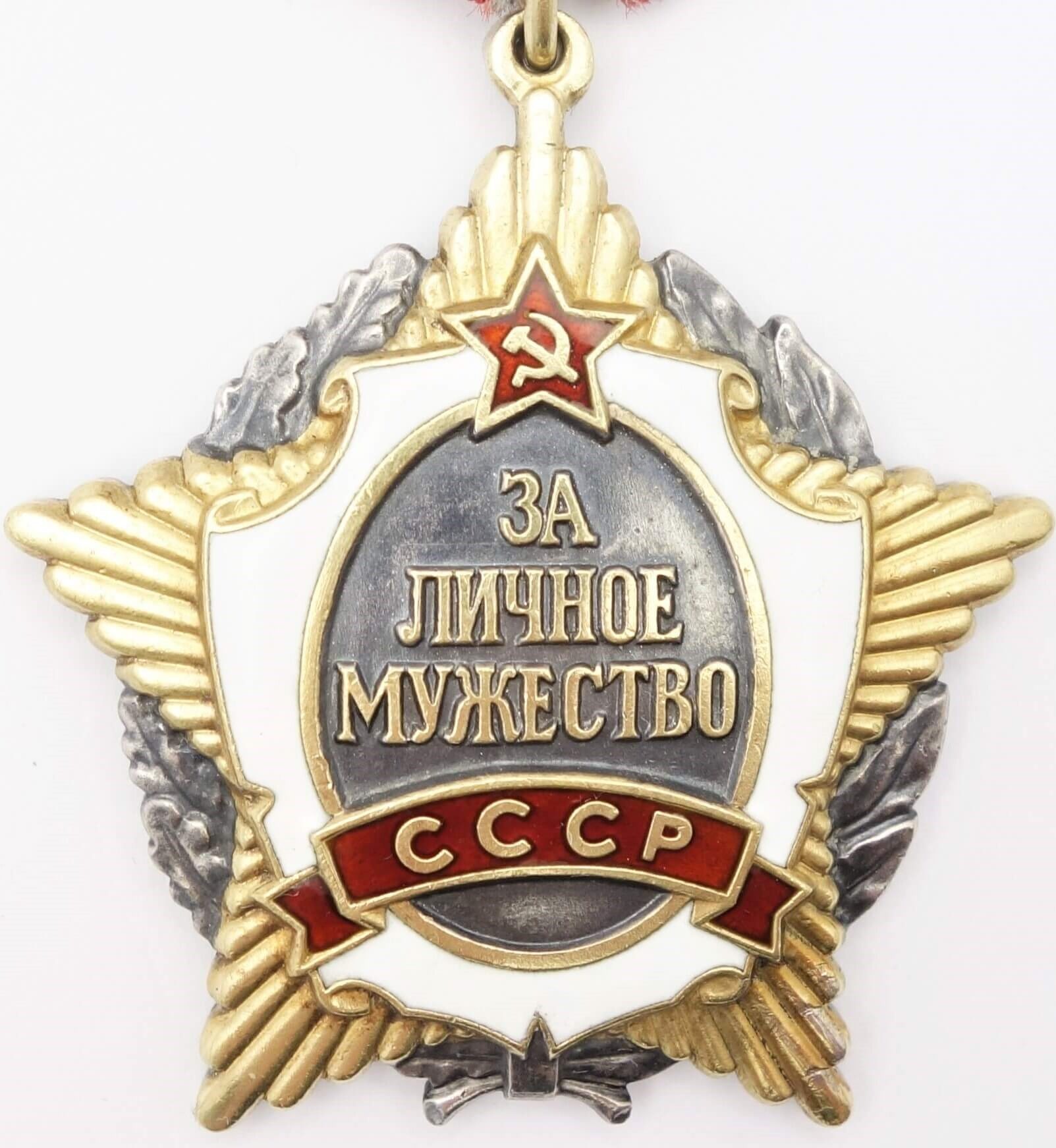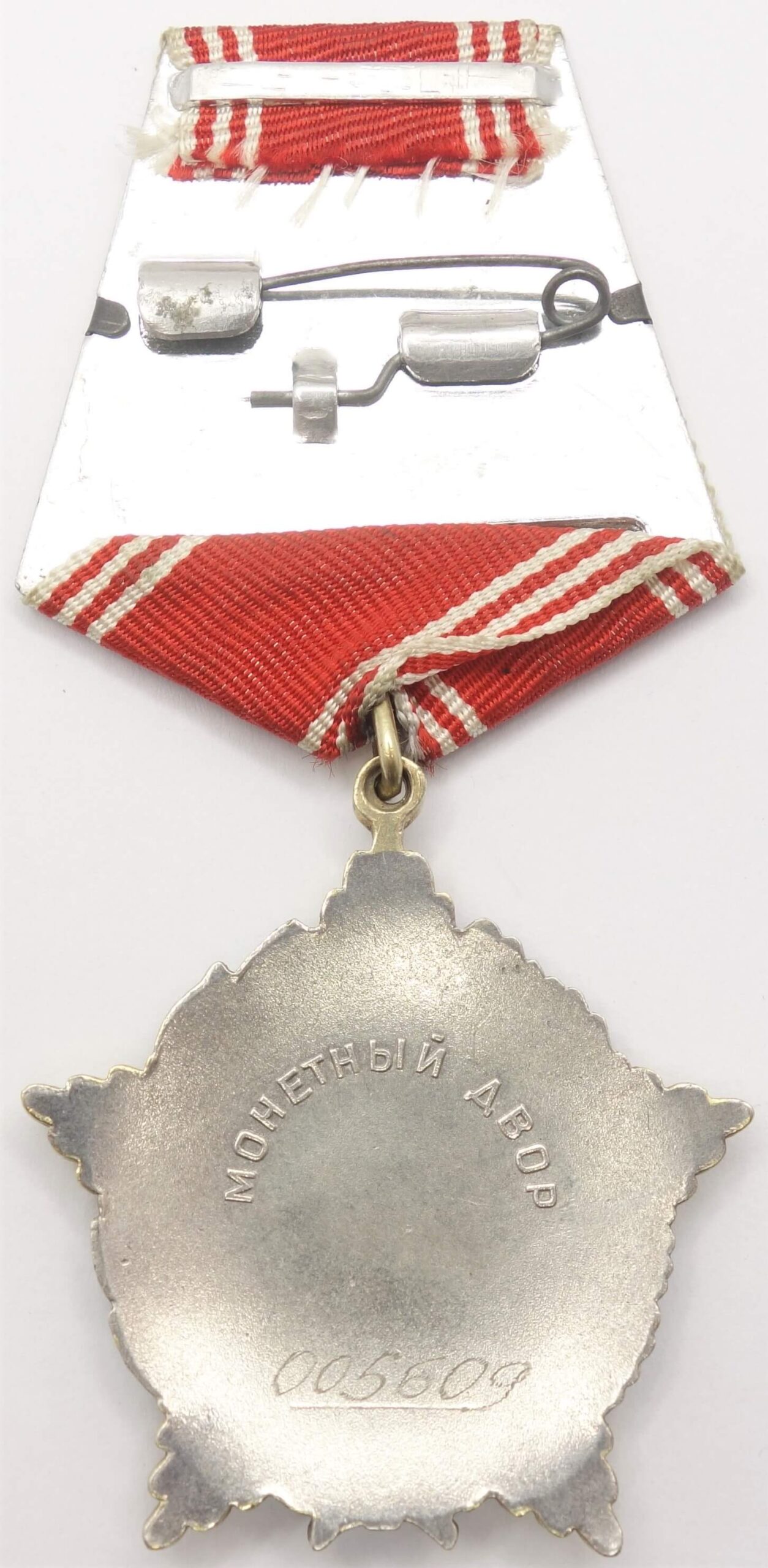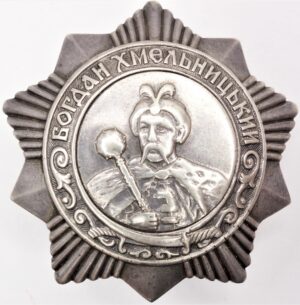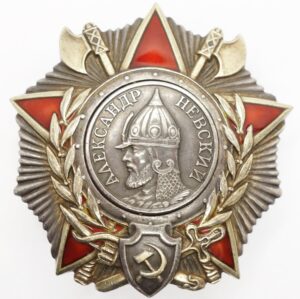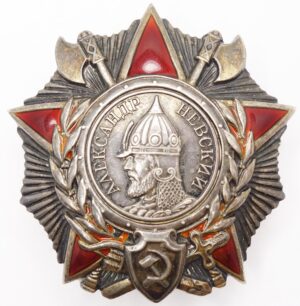Description
Order for Personal Courage #005609
Awarded to Bakhtier Yakhshimuratovich Tazhiev (Бахтиер Яхшимуратович Тажиев)
Born in 1964, plasterer of “Gosagroprom” State Agroindustrial Committee
Awarded for the Armenian earthquake relief works by Decree №385 issued on 15.08.1989 by the Supreme Soviet USSR
For courage and selfless actions shown during the elimination of the consequences of the earthquake in the Armenian SSR, to award: employees of enterprises, associations, institutions and organizations subordinate to the Council of Ministers of the Ukrainian SSR, who most distinguished themselves in the elimination of the consequences of the earthquake in the Armenian
Made of silver and enamels. It measures 44.67 mm in width, 48.11 mm in height and weighs 33.2 grams without its suspension. The mint mark and serial number “005609” are located on its reverse.
This original Order of Personal Courage is in great condition with all details crisp and full gold plating. The red enamels are beautiful and show some minor contact marks. The white enamels are well preserved as well and show a small superficial chip on the bottom only, barely visible with the naked eye and not penetrating the silver. The suspension and ribbon are time period to the medal and its connection ring has not been cut.
Only 529 Orders for Personal Courage were awarded. This order is therefore among the rarest of post WW2 Soviet awards.
A true rarity!
Some information on the 1988 Armenian earthquake:
The 1988 Armenian earthquake, also known as the Spitak earthquake occurred on December 7 at 11:41 local time with a surface wave magnitude of 6.8 and a maximum MSK intensity of X (Devastating). The shock occurred in the northern region of Armenia (then part of the Soviet Union) which is vulnerable to large and destructive earthquakes and is part of a larger active seismic belt that stretches from the Alps to the Himalayas. Activity in the area is associated with tectonic plate boundary interaction and the source of the event was slip on a thrust fault just to the north of Spitak. The complex incident ruptured multiple faults, with a strike-slip event occurring shortly after the initiation of the mainshock. Between 25,000 and 50,000 were killed and up to 130,000 were injured.
Seismologists thoroughly studied the effects of the Spitak event, including the mainshock and aftershock fault rupture mechanisms, and were on site setting up temporary seismometers before the end of 1988. Earthquake engineering experts scrutinized building construction styles and found fault in the poorly constructed apartments and other buildings that were built during the Era of Stagnation under the rule of Leonid Brezhnev. The cities of Spitak, Leninakan (Gyumri) and Kirovakan (Vanadzor) were greatly affected with large losses of life and devastating effects to buildings and other structures. A number of the smaller outlying villages away from the larger population centers were also severely affected.
Despite the tensions of the Cold War, Soviet leader Mikhail Gorbachev formally asked the United States for humanitarian help within a few days of the earthquake, the first such request since the late 1940s. One hundred and thirteen countries sent substantial amounts of humanitarian aid to the Soviet Union in the form of rescue equipment, search teams and medical supplies. Private donations and assistance from non-governmental organizations also had a large part of the international effort. While transporting some of these supplies to the region, a Soviet aircraft carrying 9 crew members and 69 military personnel, and a transport plane from Yugoslavia, were both destroyed in separate incidents. In support of the relief effort, recording artists united to produce several music-related contributions for the victims of the quake. A song was produced by a duo of French composers (including Charles Aznavour) and a studio album that featured songs donated by mainstream rock bands was released from the Rock Aid Armenia effort by the British music industry.
(source: wikipedia)
Please contact us with questions
